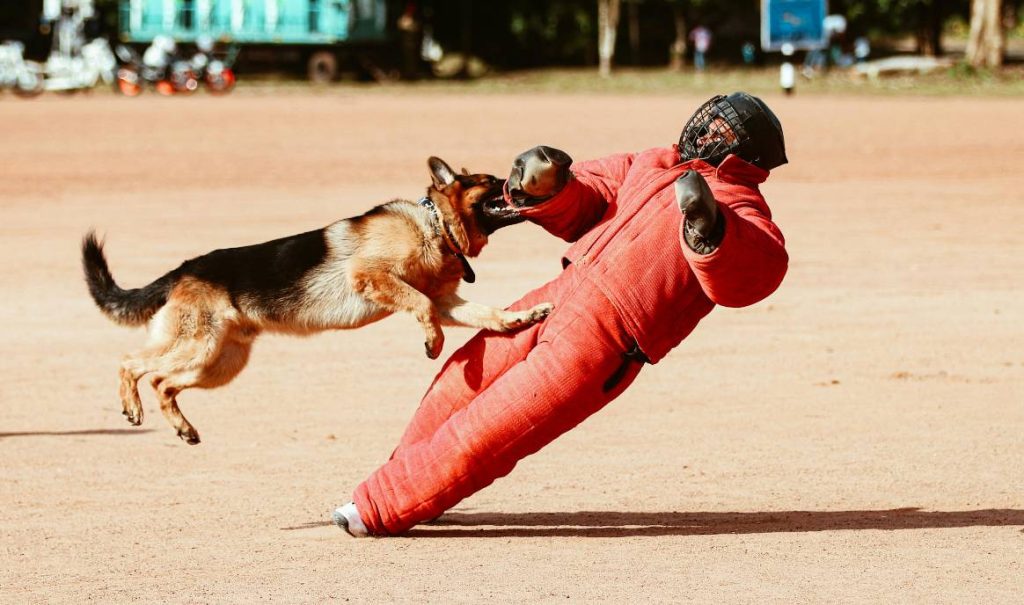It happens fast.
One moment, the park hums with laughter — dogs tumbling over each other, tennis balls cutting through the air. The next? A yelp. A snap. Blood. Panic. A stranger’s dog just bit you. Your heart races. The smell of grass, sweat, and wet fur mixes in a weird, grounding chaos.
And suddenly, you’re frozen. What now?
Dog bites at parks aren’t rare. According to the CDC, about 4.5 million happen every year in the U.S., and roughly 800,000 of those send people to ERs. That’s not a niche issue — that’s everyday life going sideways. So, what should you do when a casual park visit turns bloody?
1. Get to Safety
Pull your dog (and yourself) out of the rough instantly. Use your voice first—firm tone, loud if needed. Yanking at the leash? Risky. One misstep and someone else gets hurt.
Move away from the fray. If possible, sit down in a calm area (or ensure that no other dogs are approaching). Your heart’s racing. That’s normal. You need a moment to steady. At this point, treat everything like it’s serious. You’re not being dramatic.
2. Seek Medical Attention
Even if the cut looks tiny or the dog owner says, “It’ll be fine,” seek medical attention. Dog mouths have nasty bacteria, like Pasteurella, Staph.
The risk of infection? Real. In a prospective study of 495 dog‑bite patients published in the National Library of Medicine, about 5.2% developed an infection..
So, wash the wound with soap and warm water for at least a few minutes. Bandage it. Then get professional care. Check tetanus status. Get antibiotics if the doctor prescribes.
3. Document Everything
You’re probably shaken, maybe embarrassed. But grab your phone. Snap photos of:
- the wound,
- the park layout,
- the dog (from a safe distance),
- the gate,
- the bench, and
- the fence.
Then jot down the time, location, and description. What was the dog doing before it happened? Who was there? Witnesses’ names. You’ll thank yourself later. Memories blur. Paper doesn’t.
4. Identify the Dog and its Owner
Here comes the delicate part. You want to keep things calm. Ask for the owner’s name, phone, and dog’s vaccination records (especially rabies). If they act weird, get whatever you can — license plate, breed, color, collar.
In dog parks you trust, you still have to protect yourself.
Familiar dogs can still bite. A lot of bites happen with dogs people know. According to CDC data, many victims are bitten by their own or a neighbor’s dog.
5. Report the Bite

Yes, this feels official. You might worry about causing a fuss. But this isn’t about blame only: it’s about safety.
Contact your local animal control or health department. File a report. They’ll look at vaccination status, possible quarantine, and repeat behavior. You’re building a record for you, and for anyone else who might use that park tomorrow.
6. Consult a Lawyer
Now, if the bite caused serious injury, ongoing issues, or expensive vet/medical bills — this is the time. Dog-bite rules vary by state.
In a city like St. Louis, for instance, owners can be held strictly liable under certain circumstances. Getting advice from a St. Louis dog bite lawyer from DM Injury Law can help clarify what rights you have — medical costs, lost work, and emotional trauma.
It’s not about suing for spite. It’s about making sure you aren’t stuck alone under the weight of what happened.
What Recovery Looks Like — and How to Handle the Aftermath
The wound may heal. But the memory lingers. The smell of the park that day, the flash of the incident, the moment you froze. Around 43 deaths per year in the U.S. are attributed to dog bites or strikes (2011–2021), according to the CDC. That’s rare — but it shows this isn’t trivial.
Emotionally, you might flinch next time you clip the leash. That’s okay. Give yourself and your dog time. Maybe skip the off-leash hour for a bit. Maybe watch quietly from the sidelines. Re-introduce the park when you feel ready.
Also, if it were your dog that bit or got bitten, behavior matters. Get the trainer. Watch for changes. The park isn’t off-limits forever, but it might look different now.
The Next Walk Through the Gate
You’ll go back. Maybe tomorrow, maybe in a week. When you do, the grass will look the same. The fence, the benches, the other dogs. And you’ll be a little more aware. A little more cautious. Not fearful — just steady.
Because playtime should mean freedom, joy, nothing more than a tennis ball flying and paws pounding. And with a little care, it still can be. Just smarter this time.





